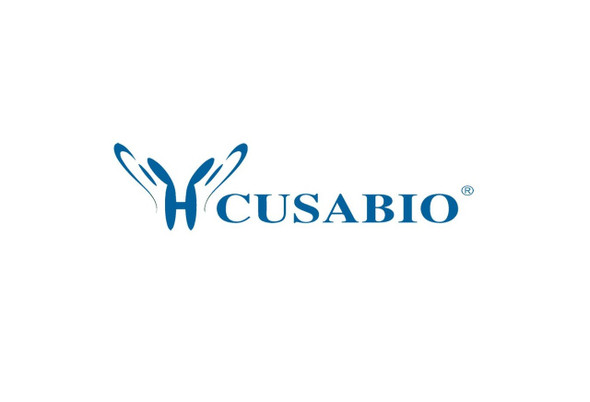Cusabio Mouse Recombinants
Recombinant Mouse Toll-like receptor 4 (Tlr4), partial | CSB-YP023603MO
- SKU:
- CSB-YP023603MO
- Availability:
- 25 - 35 Working Days
Description
Recombinant Mouse Toll-like receptor 4 (Tlr4), partial | CSB-YP023603MO | Cusabio
Alternative Name(s): CD_antigen: CD284
Gene Names: Tlr4
Research Areas: Immunology
Organism: Mus musculus (Mouse)
AA Sequence: NPCIEVVPNITYQCMDQKLSKVPDDIPSSTKNIDLSFNPLKILKSYSFSNFSELQWLDLSRCEIETIEDKAWHGLHHLSNLILTGNPIQSFSPGSFSGLTSLENLVAVETKLASLESFPIGQLITLKKLNVAHNFIHSCKLPAYFSNLTNLVHVDLSYNYIQTITVNDLQFLRENPQVNLSLDMSLNPIDFIQDQAFQGIKLHELTLRGNFNSSNIMKTCLQNLAGLHVHRLILGEFKDERNLEIFEPSIMEGLCDVTIDEFRLTYTNDFSDDIVKFHCLANVSAMSLAGVSIKYLEDVPKHFKWQSLSIIRCQLKQFPTLDLPFLKSLTLTMNKGSISFKKVALPSLSYLDLSRNALSFSGCCSYSDLGTNSLRHLDLSFNGAIIMSANFMGLEELQHLDFQHSTLKRVTEFSAFLSLEKLLYLDISYTNTKIDFDGIFLGLTSLNTLKMAGNSFKDNTLSNVFANTTNLTFLDLSKCQLEQISWGVFDTLHRLQLLNMSHNNLLFLDSSHYNQLYSLSTLDCSFNRIETSKGILQHFPKSLAFFNLTNNSVACICEHQKFLQWVKEQKQFLVNVEQMTCATPVEMNTSLVLDFNNSTCYMYKTIISVSVVS
Source: Yeast
Tag Info: N-terminal 6xHis-tagged
Expression Region: 26-638aa
Sequence Info: Partial
MW: 71.5 kDa
Purity: Greater than 90% as determined by SDS-PAGE.
Relevance: Cooperates with LY96 and CD14 to mediate the innate immune response to bacterial lipopolysaccharide (LPS). Acts via MYD88, TIRAP and TRAF6, leading to NF-kappa-B activation, cytokine secretion and the inflammatory response. Also involved in LPS-independent inflammatory responses triggered by free fatty acids, such as palmitate. In complex with TLR6, promotes sterile inflammation in monocytes/macrophages in response to oxidized low-density lipoprotein (oxLDL) or amyloid-beta 42. In this context, the initial signal is provided by oxLDL- or amyloid-beta 42-binding to CD36. This event induces the formation of a heterodimer of TLR4 and TLR6, which is rapidly internalized and triggers inflammatory response, leading to the NF-kappa-B-dependent production of CXCL1, CXCL2 and CCL9 cytokines, via MYD88 signaling pathway, and CCL5 cytokine, via TICAM1 signaling pathway, as well as IL1B secretion. Binds electronegative LDL (LDL-) and mediates the cytokine release induced by LDL
Reference: "Genetic and physical mapping of the Lps locus: identification of the Toll-4 receptor as a candidate gene in the critical region." Poltorak A., Smirnova I., He X., Liu M.-Y., Van Huffel C., Birdwell D., Alejos E., Silva M., Du X., Thompson P., Chan E.K.L., Ledesma J., Roe B., Clifton S., Vogel S.N., Beutler B. Blood Cells Mol. Dis. 24:340-355(1998)
Storage: The shelf life is related to many factors, storage state, buffer ingredients, storage temperature and the stability of the protein itself. Generally, the shelf life of liquid form is 6 months at -20?/-80?. The shelf life of lyophilized form is 12 months at -20?/-80?.
Notes: Repeated freezing and thawing is not recommended. Store working aliquots at 4? for up to one week.
Function: Cooperates with LY96 and CD14 to mediate the innate immune response to bacterial lipopolysaccharide (LPS)
Involvement in disease: The protein is encoded by the Lps locus, an important susceptibility locus, influencing the propensity to develop a disseminated Gram-negative infection.
Subcellular Location: Cell membrane, Single-pass type I membrane protein, Early endosome
Protein Families: Toll-like receptor family
Tissue Specificity: Highly expressed in heart, spleen, lung and muscle. Lower levels are found in liver and kidney. Expressed in macrophages.
Paythway:
Form: Liquid or Lyophilized powder
Buffer: If the delivery form is liquid, the default storage buffer is Tris/PBS-based buffer, 5%-50% glycerol. If the delivery form is lyophilized powder, the buffer before lyophilization is Tris/PBS-based buffer, 6% Trehalose, pH 8.0.
Reconstitution: We recommend that this vial be briefly centrifuged prior to opening to bring the contents to the bottom. Please reconstitute protein in deionized sterile water to a concentration of 0.1-1.0 mg/mL.We recommend to add 5-50% of glycerol (final concentration) and aliquot for long-term storage at -20?/-80?. Our default final concentration of glycerol is 50%. Customers could use it as reference.
Uniprot ID: Q9QUK6
HGNC Database Link: N/A
UniGene Database Link: UniGene
KEGG Database Link: KEGG
STRING Database Link: STRING
OMIM Database Link: N/A









